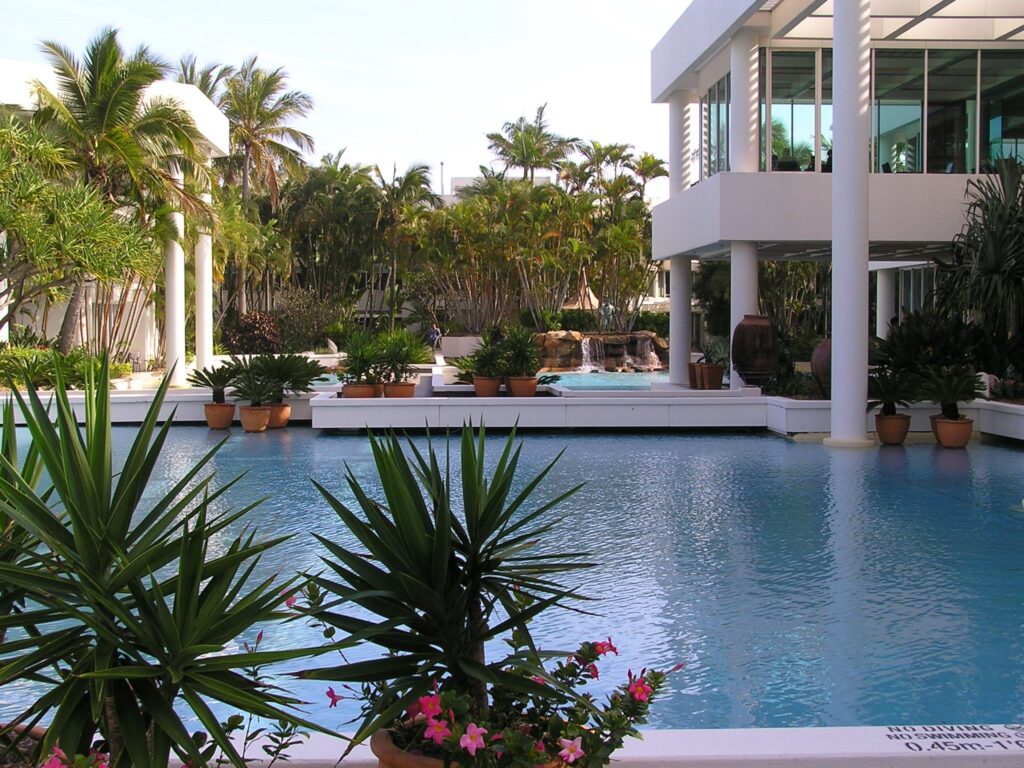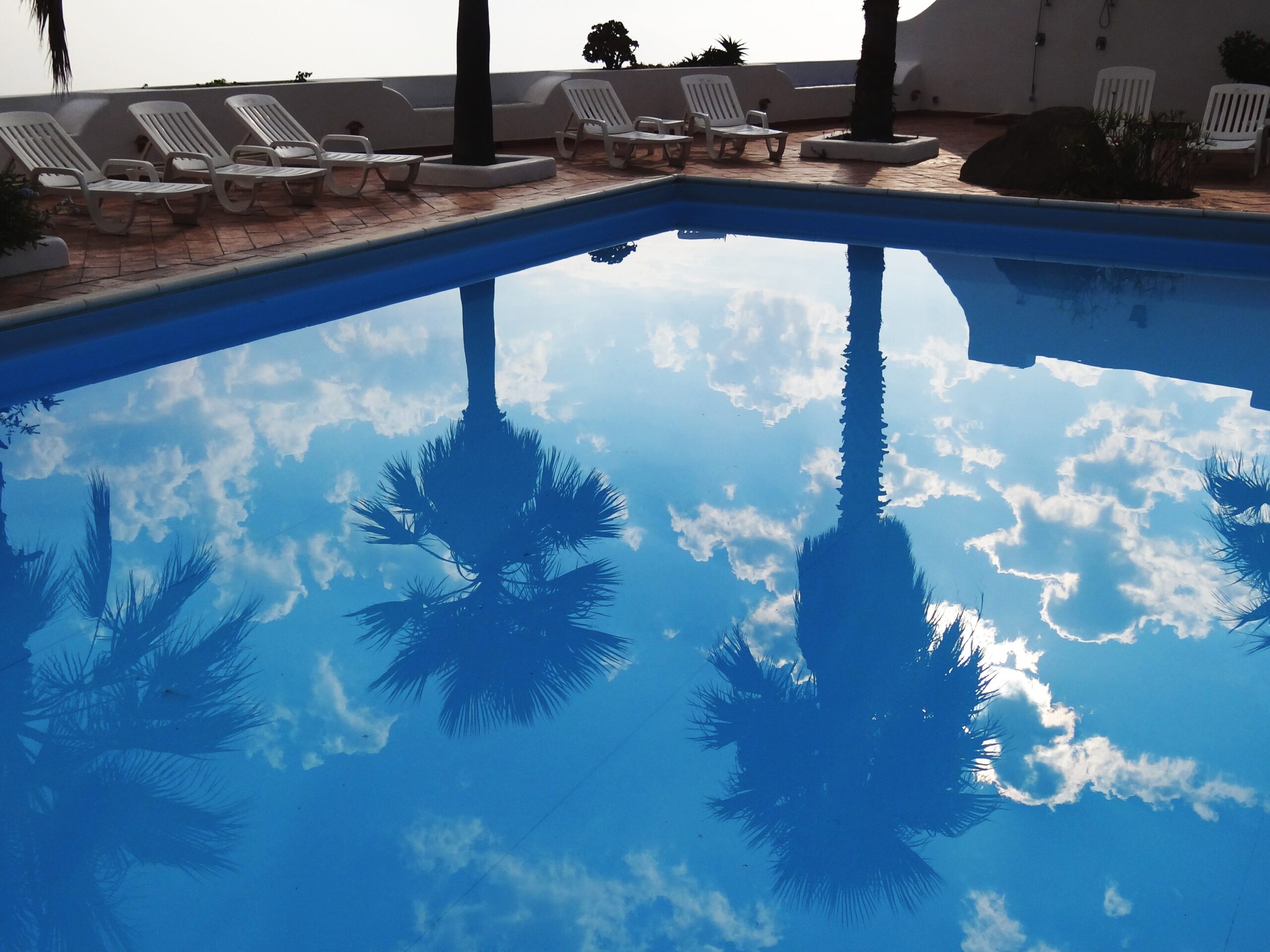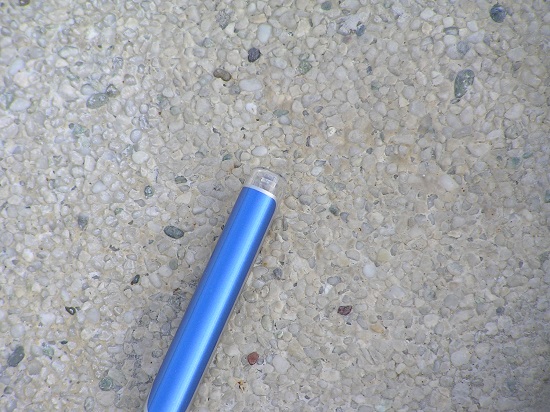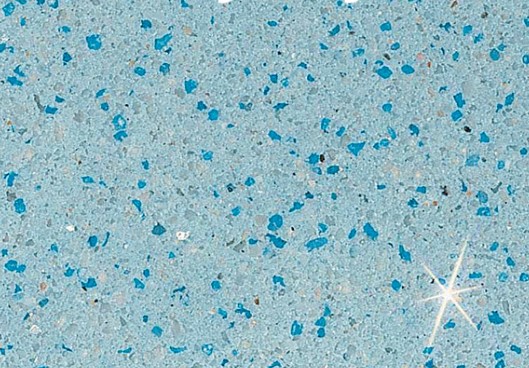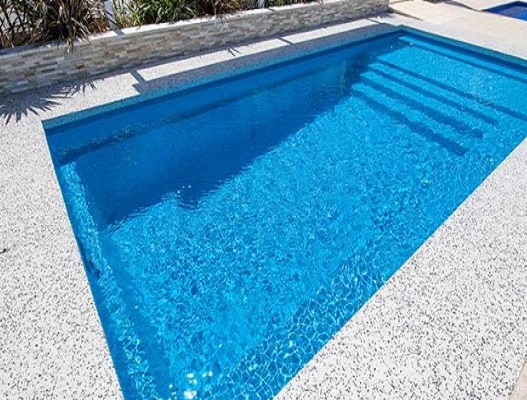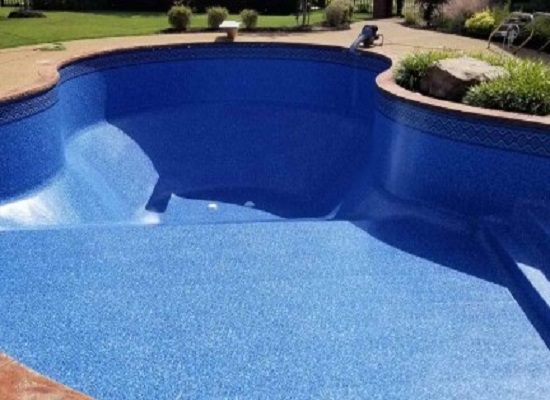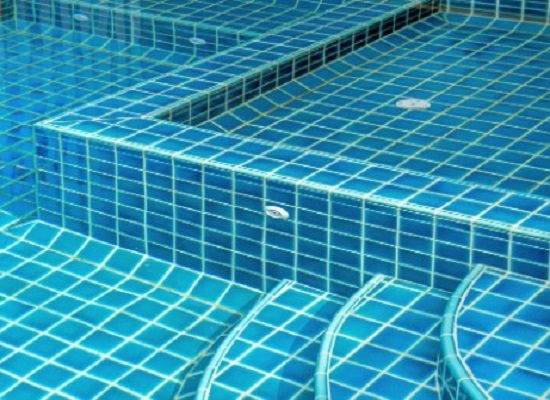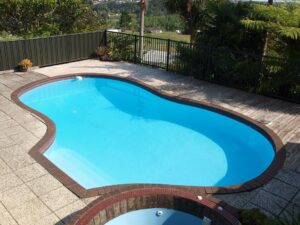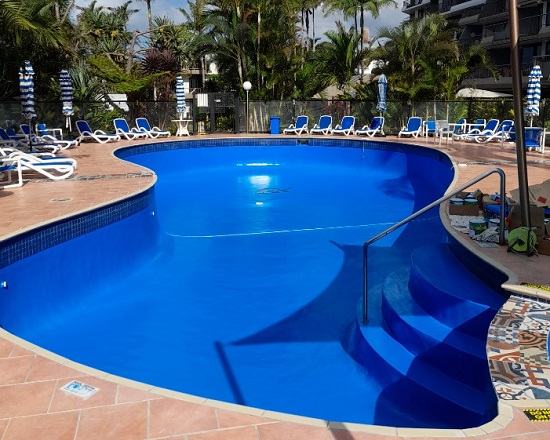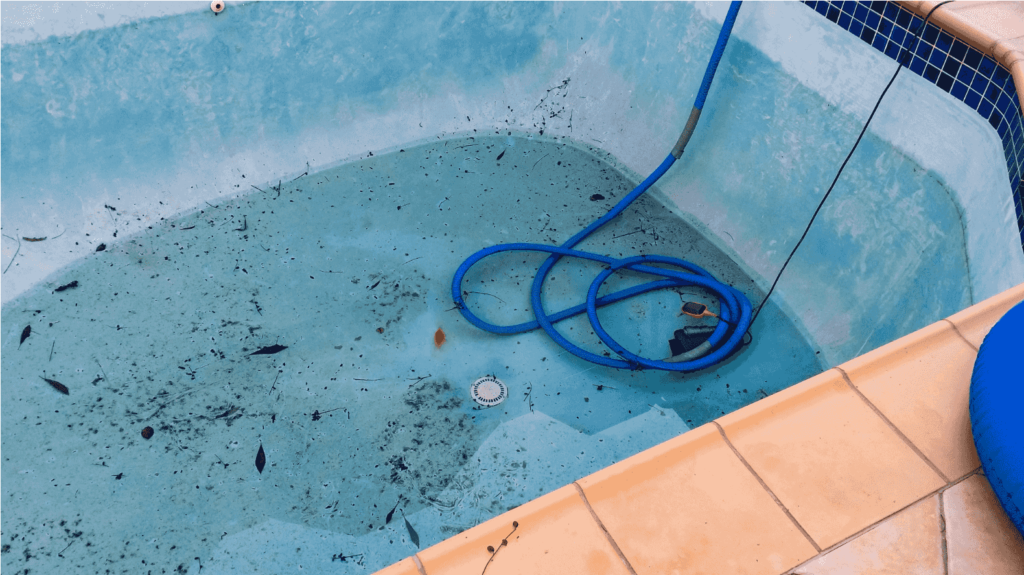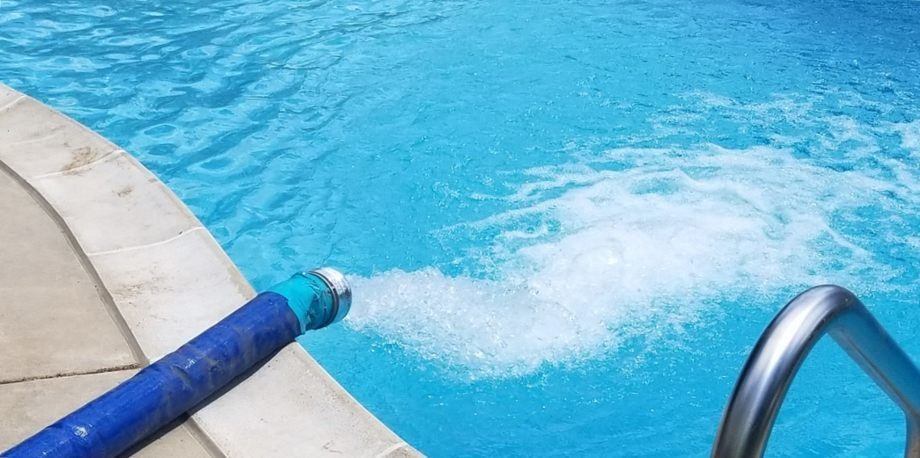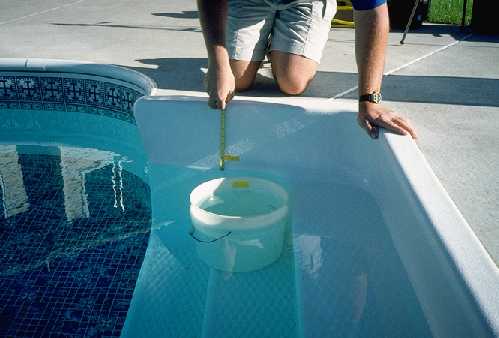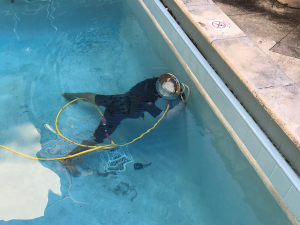Meet Michael, Hes Got a (pool) Problem
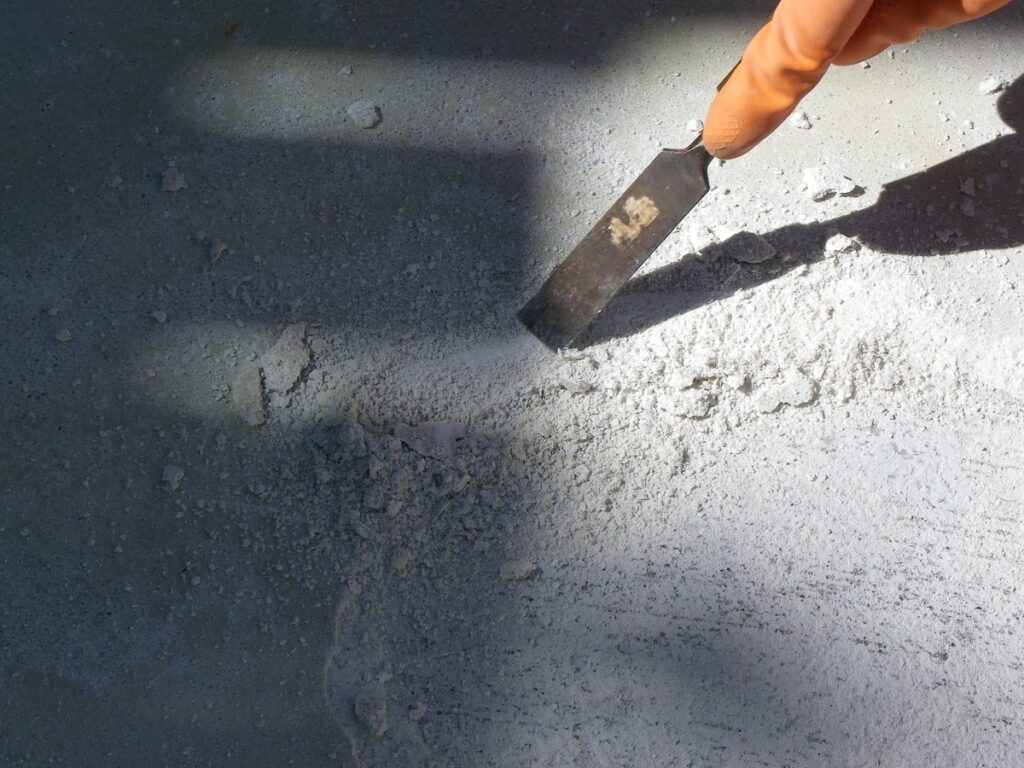
Meet Michael, Hes’ Got a (Pool) Problem
Michael has a great (large) pool, and it has served him and his family well for over 15 years, but now it’s showing its age. Being Marcite it started out well enough as they usually do. However, being a reactive surface (meaning it reacts to some of the chemicals you must put in your pool, notably acid) it slowly dissolves.
Michael noted that in recent times it was getting harder to keep algae under control. To keep ahead of the growth, he was adding more and more (expensive) algaecide to the pool water. This not only costs money, but it’s also not that good for you in large doses. He started feeling a little unwell after each swim.
Also, the pool surface was getting more stains and becoming quite unattractive to look at.
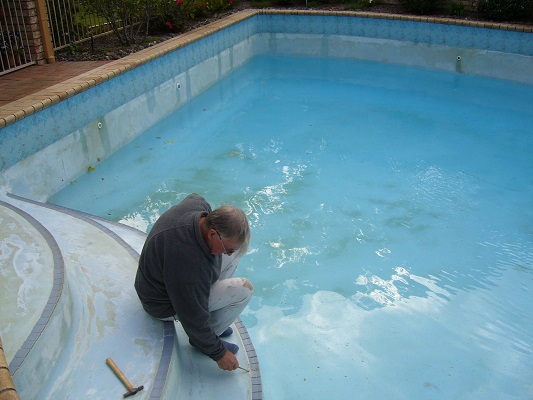
Though Michael was a careful and responsible pool owner (his young grandkids came over a lot in the summer) there was a niggling worry about them and all these chemicals too. So, one recent winter he decided to do something to get his pool back to how it used to be when new.
After a lot of research and talking to local pool shops, contractors, and neighbors Michael finally settled on upgrading the Marcite with a new hard-wearing, easy-clean, and long-lasting, decorative coating. One that will save him hours of cleaning and heaps of dollars with much less chemical treatment. It’s like putting a new skin over the Marcite to provide a colorful finish, a base for murals, one that algae cannot grow on, and is really easy on the cleaning and maintenance side. This is really important, as Michael was in his early 70s and the thought of any more major work on the pool in his advancing age, is not tenable. By the way, Michael is a retired painter so he understands coatings and was seeking only the very best for his pool. Something that his neighbors and friends were interested in enjoying in their aging pools also.
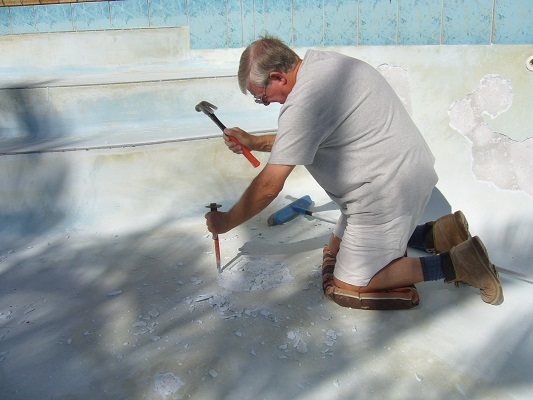
Remove all such drummy areas carefully and do not hit the surface too hard as it will dislodge, stable material on the periphery. Note well-stained Marcite. These areas do not need to be removed but treated with high-strength algicide to kill the roots.
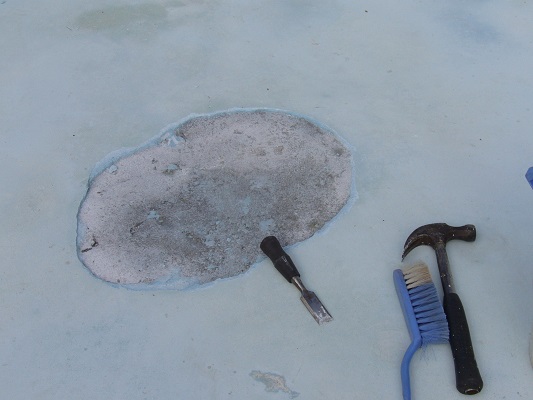
An example of a removed area of Marcite showing an underlying concrete surface. Note the firm edges left and no cracked material surrounding the area removed. Meaning it’s all well adhered to the concrete, here.
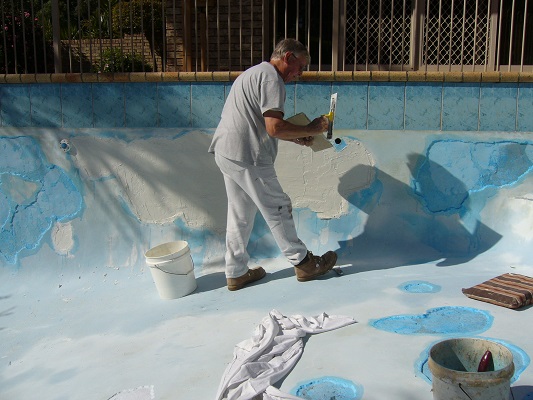
Using a suitable repair compound to re-surface those areas where the Marcite was removed (Michael followed the suggested products listed in the comprehensive Application Notes, on our website – paintnforget.com) The blue areas are the primer to the exposed concrete surfaces, so the repair compound adheres. In this case it’s trowelled flush and fairly smooth. After 24 hours to set, it’s lightly sanded flush to match adjoining areas.
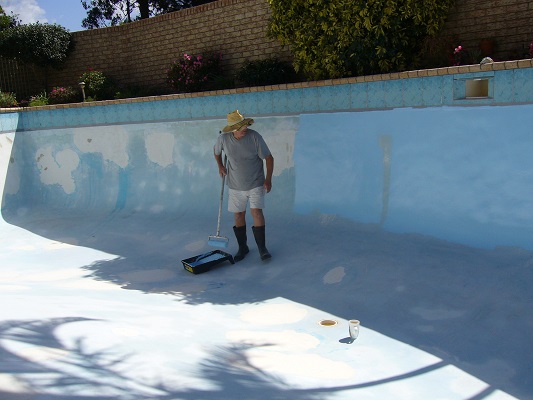
Michael is hard at work on his large pool, applying by roller the first color coat. The surface has been primed with clear penetrating sealer first. Application in warm sunny weather is best.
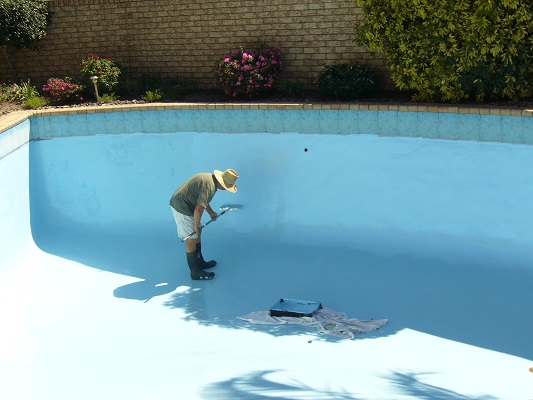
After 24 hours of cure time, the second color coat can be applied. Allow to fully cure before filing with water.
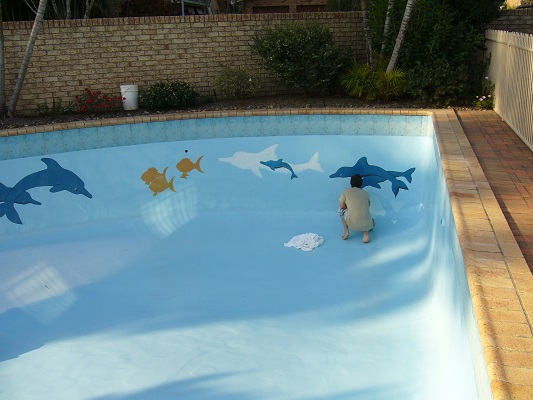
Michael wanted some murals for the grandkids so here is a local artist sketching out the outlines for Michael to color in. This was undertaken a few days after the last color coat was applied.
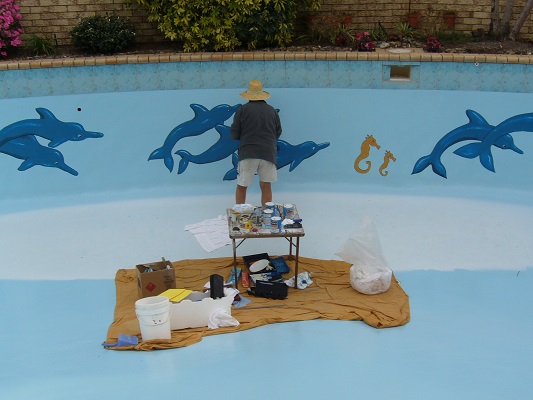
Michael completing the murals with the same material as the topcoat for maximum color longevity and durability.
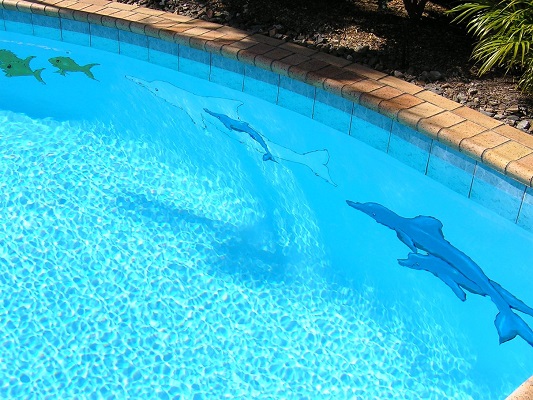
Pool murals are finished and in bright sunlight. The main pool paint color is Mid Blue.
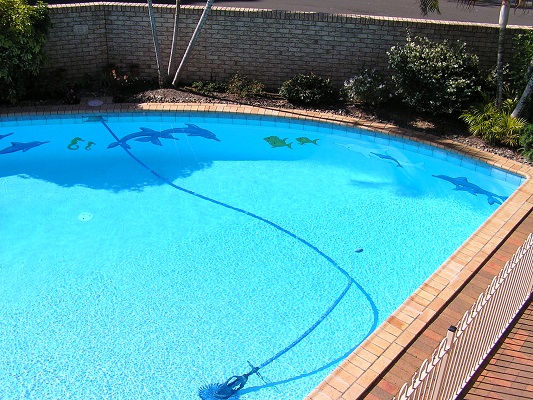
If you have a pool like Michael’s, ( Marcite, Pebble Tec, Plaster or similar, even Fiberglass,) let us know and we can personally work with you to understand your pool needs, your budget, and your future requirements. Then we will guide you on how to achieve a finish that will meet, indeed exceed your requirements. We like to discuss with you one on one to develop just the right answer for you and your pool. One you will enjoy for decades and be proud to share with friends and neighbors. Just go to Contact Button on the website. We will follow up promptly.


